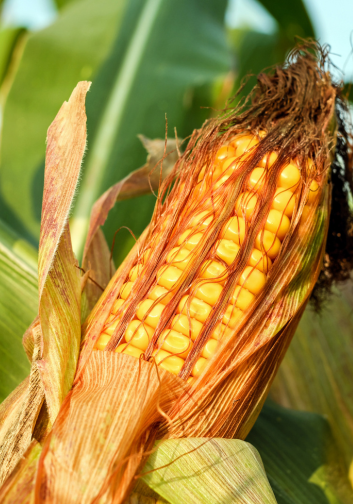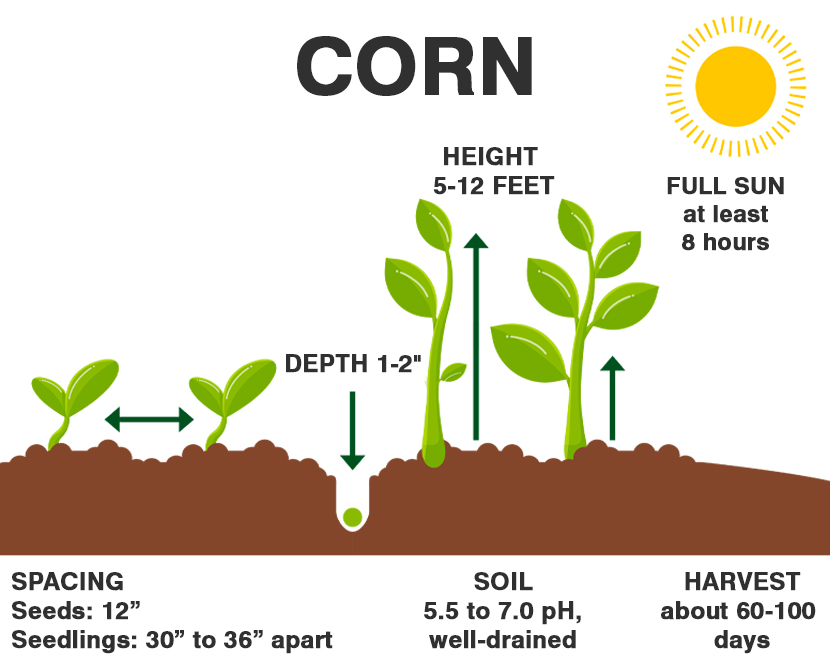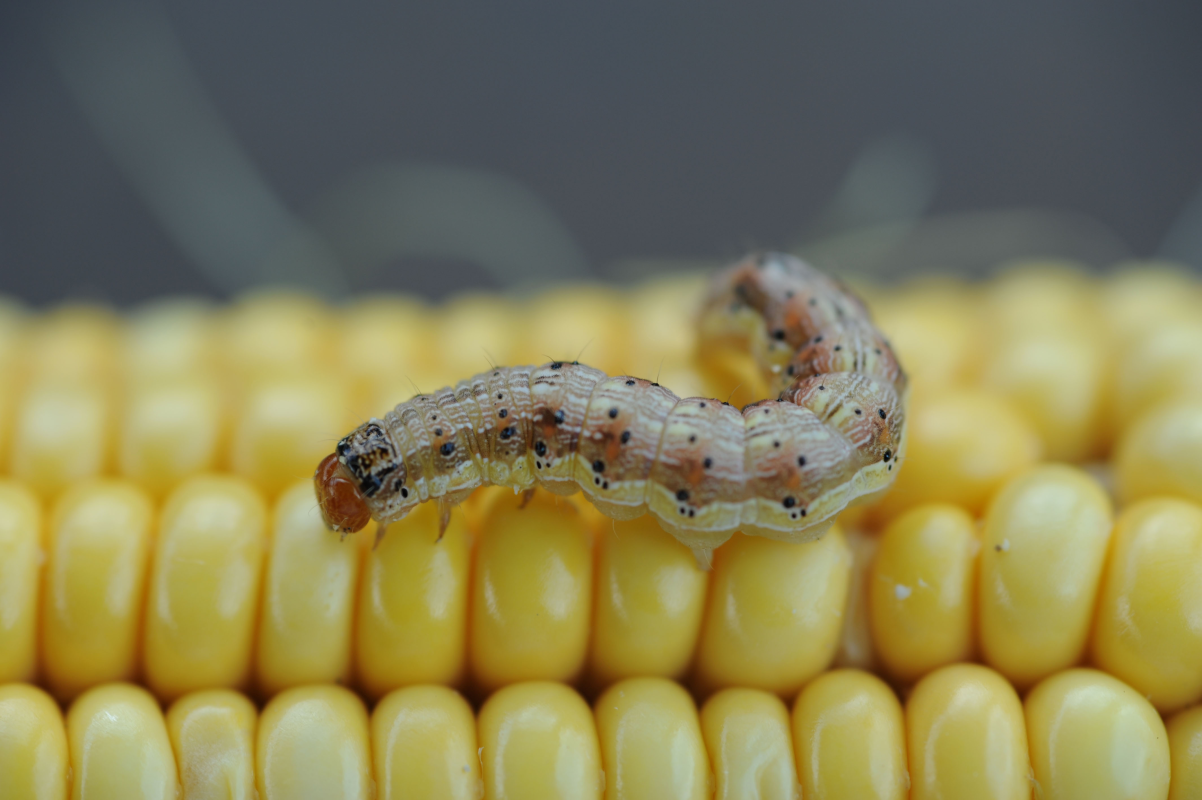Corn, scientifically known as Zea mays, is a staple food and a major field crop grown extensively around the globe. Originating from Mexico over 9,000 years ago, corn has become vital not only as a direct food source but also as fodder for livestock, a base for various food products, and even in industrial applications such as ethanol production.

Corn should be planted after the last frost when the soil has warmed to at least 60°F. This is typically from mid-spring to early summer, depending on your local climate.
| Common Name | Corn |
| Botanical Name | Zea mays |
| Family | Poaceae |
| Plant Type | Annual |
| Size | 5–12 ft. tall, 2–3 ft. wide |
| Sun Exposure | Full sun |
| Soil Type | Well-drained, fertile soil |
| Soil pH | 5.5–7.0 (slightly acidic to neutral) |
| Bloom Time | Mid-late summer |
| Hardiness Zones | 10–11 (grown as an annual elsewhere) |

When to Plant?
This will be determined by your planting zone. There is a final frost date for each area. As a result, you can plan your gardening activities around this date. Check our Frost Dates Across North America: First & Last Frost Dates Chart. However, the date will not be the same for every plant. Corn should be planted after the last frost when the soil has warmed to at least 60°F. This is typically from mid-spring to early summer, depending on your local climate.
How to Plant
- Soil Preparation: Ensure the soil is well-tilled, loose, and rich in organic matter. Add compost or aged manure to enrich the soil.
- Sowing Seeds: Plant corn seeds directly into the ground, about 1 inch deep and 4 to 6 inches apart. Rows should be spaced about 30 to 36 inches apart.
- Watering: Corn needs a lot of moisture to grow, especially as it nears pollination. Water thoroughly at least once a week, more frequently during hot, dry spells.

When growing basil, it is best to use larger pots. The smaller the pot, the more often the plant needs to be watered. On hot summer days, the soil can dry out, which will harm the plant. A sunny windowsill is an ideal spot to grow basil. The best time to plant basil is late in the day or early morning so that the plant is not immediately exposed to the scorching sun. Companion planting: Plant basil among other herbs and vegetables with similar lighting and watering needs, e.g., parsley or tomatoes. Some people say tomatoes taste better when they neighbor basil. Plant basil alongside chamomile, lettuce, oregano, and peppers.
How to Cultivate
Sun – Needs at least six hours of sun per day.
Spacing – If planting more than one, space the basil plants about 4 inches apart to allow for growth.
Water – Large beds or planter boxes may only need water every 3 – 4 days.
Soil – Basil loves moist, rich, well-drained soil with a pH of 6.0 – 7.0.
How to Harvest
- Corn is ready to harvest about 20 days after the first silk strands appear, but this can vary. Harvest when the silks have turned brown and the kernels are plump and milky when punctured with a fingernail.
- To harvest, pull the ear down and twist away from the stalk.
Common Pests and Diseases
Corn Earworm (Helicoverpa zea)
Symptoms: The corn earworm primarily attacks the ears of corn, consuming kernels and leaving behind frass (waste). Infestation typically starts at the tip of the ear, making it visibly damaged and prone to secondary infections.
Cause: Insect
Management
- Use timed insecticide applications when the larvae are small and before they enter the ear.
- Planting early or using corn varieties that mature earlier can help escape peak larval activity.
- Biological control options include releasing natural predators like Trichogramma wasps.

Northern Corn Leaf Blight (Setosphaeria turcica)

Symptoms: This disease is identified by long, elliptical, grayish-green or tan lesions on the leaves. These lesions can expand and coalesce under favorable conditions, potentially leading to significant leaf blight.
Cause: Fungus
Management
- Plant-resistant corn varieties are specifically bred to withstand this pathogen.
- Apply fungicides if necessary, particularly during periods of high humidity and moderate temperatures, which favor the disease.
- Implement crop rotation with non-host crops to reduce the inoculum in the soil.


